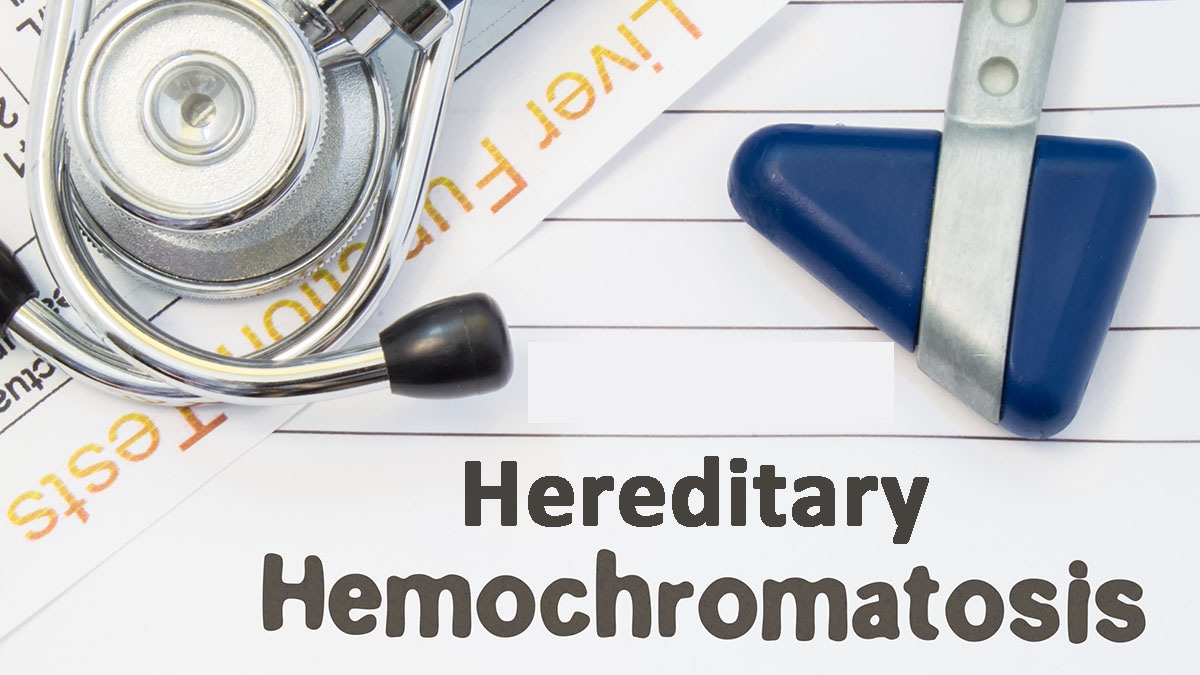Key points
- Hemochromatosis is a disease in which too much iron builds up in the body and can cause severe liver disease and other health problems.
- Early diagnosis and treatment are critical to prevent complications from the disease.
- If you have a family health history of hemochromatosis, talk to your healthcare provider about testing for hereditary hemochromatosis.

What it is
Hemochromatosis is a disorder in which the body can build up too much iron (called iron overload) in the skin, heart, liver, pancreas, pituitary gland, and joints. Too much iron is toxic to the body, and over time the high levels of iron can damage tissues and organs and lead to
- Cirrhosis (liver damage)
- Hepatocellular carcinoma (liver cancer)
- Heart problems
- Arthritis (joint pain)
- Diabetes
Signs and symptoms
Symptoms of hemochromatosis include
- Feeling tired or weak
- Weight loss
- Joint pain
- Bronze or grey skin color
- Abdominal pain
- Loss of sex drive
Many people with hereditary hemochromatosis don't know they have it. Early symptoms of hemochromatosis, such as feeling tired or weak, are common and can also be symptoms of a variety of other diseases.
People at risk
Hereditary hemochromatosis is most common among people with Northern European ancestry. Men with hereditary hemochromatosis are more likely to develop complications than women, and men are often diagnosed at an earlier age.
Causes
Hereditary hemochromatosis is most commonly caused by certain changes in a specific gene, called the HFE gene. If you inherit two of these genetic changes (mutations), one from each parent, you have hereditary hemochromatosis and are at risk for developing high iron levels. However, most people with hereditary hemochromatosis never develop symptoms or complications. If you have a family member, especially a sibling, who is known to have hereditary hemochromatosis, talk to your healthcare provider about genetic testing.
Diagnosis
A blood test can be used to screen people who may have hemochromatosis by measuring how much iron is in their blood. Affected people with or without a known family history of hemochromatosis can be diagnosed through blood tests for excess iron in the body (called iron overload) followed by genetic testing. The earlier hemochromatosis is diagnosed, the less likely you are to develop serious complications—many of which can cause permanent problems.
Treatment
If you have hemochromatosis, your healthcare provider may suggest ways to lower the amount of iron in your body.
If you are diagnosed with hemochromatosis, regularly scheduled blood removal is the most effective way to lower the amount of iron in your body.
Your healthcare provider may also recommend
- Annual blood tests to check your iron levels
- Magnetic resonance imaging (MRI) to check for cirrhosis, permanent scarring that damages your liver and prevents it from working properly
- Iron chelation therapy, if you cannot have blood removed. This involves medicine taken either orally or injected to lower the amount of iron in your body.
- Dietary changes, such as avoiding multivitamins, vitamin C supplements, and iron supplements, which can increase iron throughout your body
- No alcohol use (because alcohol increases the risk of liver damage)
- Steps to prevent infections, including not eating uncooked fish and shellfish and getting recommended vaccinations, including those against hepatitis A and B
Resources
- Hereditary hemochromatosis, Medline Plus
- Hemochromatosis, Genetic and Rare Diseases Information Center, National Center for Advancing Translational Sciences
- About Hereditary Hemochromatosis, National Human Genome Research Institute
- HFE Hereditary Hemochromatosis, Gene Reviews
- Hemochromatosis, National Institute of Diabetes and Digestive and Kidney Diseases
